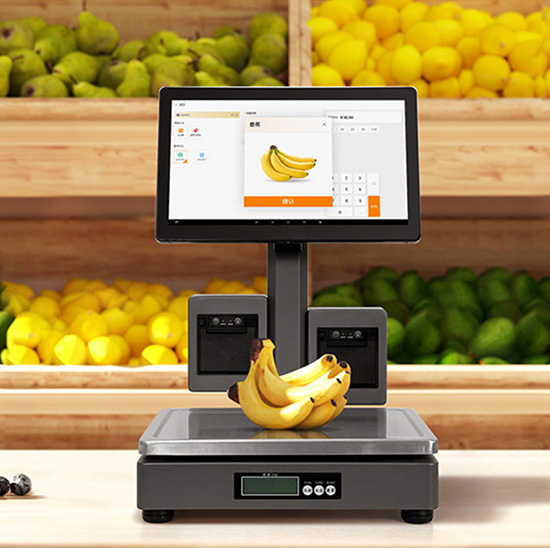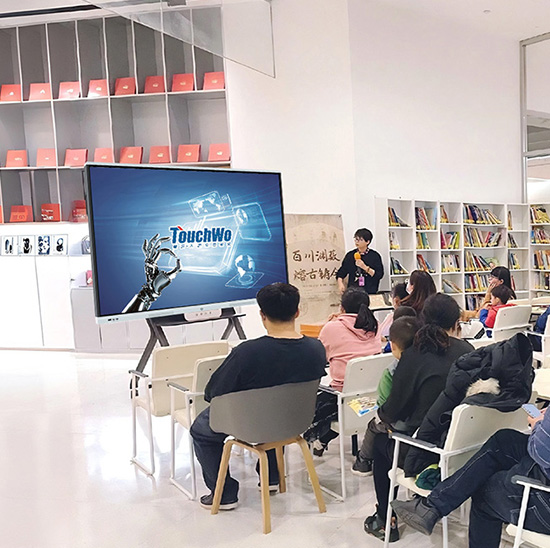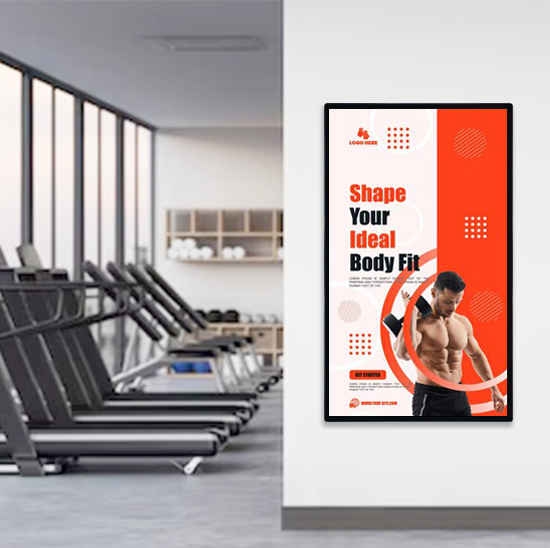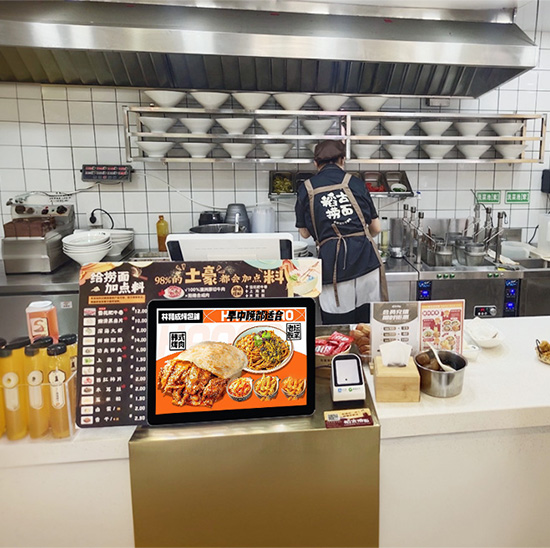U modernom knjižničnom krajoliku—gdje samoposluživanje, pristupačnost, i korisnička pogodnost ključni su za privlačenje posjetitelja—zasloni osjetljivi na dodir za kioske s knjižničnim katalogom postali su bitna nadogradnja. Za razliku od zastarjele tipkovnice – kataloški sustavi ili generički zasloni koji ne reagiraju i frustriraju korisnike, ovi specijalizirani zasloni osjetljivi na dodir pretvaraju knjižnične kioske u intuitivna središta za pregledavanje, traženje, i pristup knjižničnim resursima. Za narodne knjižnice, sveučilišne knjižnice, i školskih medijskih centara, opskrbljuju različite korisnike — od tech – pametni studenti starijim posjetiteljima — s jednostavnim, izravna interakcija. Bilo da se postavljaju u predvorjima knjižnica, zone čitanja, ili ulazi u grane, Knjižnica Kiosk Zaslon osjetljiv na dodir premošćuje jaz između fizičkih zbirki i digitalnih kataloga, olakšavajući mušterijama pronalaženje knjiga, e – sredstva, i događanja u knjižnici. Ovaj članak istražuje njihove temeljne značajke, ključne aplikacije, i utjecajne koristi, pomaže administratorima knjižnica odabrati rješenja za zaslone osjetljive na dodir koja povećavaju zadovoljstvo korisnika i pojednostavljuju samu sebe – servisne operacije.

Osnovne značajke zaslona osjetljivog na dodir knjižničnog kioska
1. Intuitivna izvedba dodira za sve korisnike knjižnice
Izuzetna prednost zaslona osjetljivih na dodir knjižničnog kioska je njihova sposobnost da korisniku ponude – prijateljska interakcija koja odgovara ljudima svih dobi i tehničkih znanja:
Svjetlo – osjetljivost na dodir: Trenutačno registrira nježne dodire i prevlačenje, koji je savršen za djecu, stariji korisnici, i oni s ograničenom snagom ruku koji se mogu boriti sa silom – potrebne metode unosa.
Multi – dodirna podrška: Omogućuje geste poput zumiranja slika naslovnice knjige ili stiskanja prstiju za promjenu veličine teksta, odraz poznatog rada pametnih telefona i tableta.
U rukavicama – kompatibilnost ruku: Radi sa zimskim rukavicama ili pokretnošću – pomoćne rukavice, osiguravajući upotrebljivost čak i za korisnike koji ne mogu skinuti rukavice po hladnom vremenu ili zbog fizičkih potreba.
2. Izdržljiv & Knjižnica – Gotova gradnja
Knjižnični kiosci svakodnevno se suočavaju s velikom upotrebom, slučajni udarci, i stalno dodirivanje—a ovi zasloni osjetljivi na dodir napravljeni su da traju:
Ogrepsti – otporno kaljeno staklo: 4mm anti – glare staklo otporno je na ogrebotine od ključeva, olovke, ili slučajnih ogrebotina, održavajući jasnu vidljivost godinama.
Mrlja – i razmazati – dokazni premaz: Poseban oleofobni sloj odbija otiske prstiju i prašinu, smanjujući učestalost čišćenja dok zaslon ostaje čist za sljedeće korisnike.
Utjecaj – otporan okvir: Pojačani plastični ili aluminijski okviri mogu izdržati manje sudare s ruksacima, dječja kolica, ili knjižnična kolica, izbjegavanje oštećenja od svakodnevnog trošenja.
3. Besprijekorna integracija sa sustavima knjižničnog kataloga
Ovi dodirni zasloni glatko se sinkroniziraju s kataloškim softverom i digitalnim alatima o kojima ovise knjižnice:
Križ – kompatibilnost platforme: Radi s vodećim sustavima za upravljanje knjižnicom (LMS) kao što je Koha, Alma, i Sierra, kao i platforme za digitalne kataloge poput LibGuides i OverDrive.
Stvaran – sinkronizacija vremenskih podataka: Trenutno ažurira podatke kataloga, uključujući dostupnost knjiga, datumi dospijeća, i novi dolasci, osiguravajući da pokrovitelji dobiju najtočnije pojedinosti.
Povezivanje resursa: Izravno se povezuje na e – knjige, audioknjige, i digitalnih časopisa, dopuštajući korisnicima da pristupe ili rezerviraju digitalne resurse sa samo nekoliko dodira na kiosku.
4. Značajke pristupačnosti za uključivu upotrebu
Služiti raznolikim potrebama svih korisnika knjižnice, ove ekrani osjetljivi na dodir opremljeni su pristupačnošću – usmjerene funkcije:
Podesivi tekst i kontrast: Podržava prilagodbe veličine i visine fonta – kontrastni načini prikaza, olakšavajući posjetiteljima s oštećenjem vida čitanje sadržaja kataloga.
Kompatibilnost čitača zaslona: Integrira se s alatima kao što su JAWS i NVDA, omogućujući slabovidnim korisnicima navigaciju katalogom putem zvučnih upita.
Veliki dodirni ciljevi: Gumbi i trake za pretraživanje veličine su za lakši odabir, prilagođavanje posjetiteljima s poteškoćama u motoričkim vještinama ili onima koji koriste pomagala.
5. Nizak – Održavanje & energija – Učinkovit rad
Za zaposleno knjižnično osoblje koje ima malo vremena za održavanje opreme, ovi zasloni osjetljivi na dodir minimiziraju radove održavanja:
Utikač – i – postava igranja: Jednostavna instalacija koja ne zahtijeva složenu konfiguraciju softvera, omogućujući knjižničnim IT timovima da brzo postave više kioska.
Auto – upravljanje napajanjem: Automatski ulazi u nisko – način napajanja tijekom isključenja – vršno vrijeme i uključuje se u vrijeme otvaranja, smanjenje potrošnje energije 35% u usporedbi sa standardnim zaslonima.
Samo – dijagnostički alati: Automatski otkriva probleme s osjetljivošću na dodir i povezivanjem, slanje upozorenja IT osoblju prije nego što problemi utječu na korištenje patrona.
Ključne primjene zaslona osjetljivog na dodir knjižničnog kioska
1. Predvorja javnih knjižnica & Ulazi
U narodnim knjižnicama koje svakodnevno primaju velik broj različitih posjetitelja, ovi dodirni zasloni služe kao prva točka pristupa resursima:
Brzo pretraživanje kataloga: Kupci mogu brzo potražiti lokacije knjiga, provjeriti dostupnost, i ispišite naljepnice na policama bez čekanja u redu na recepciji.
Pregledavanje događaja i programa: Prikazuje nadolazeće knjižnične događaje poput priča za djecu, knjižni klubovi, i radionice, s mogućnošću prijave izravno na kiosku.
Usluge knjižnične iskaznice: Omogućuje novim posjetiteljima da se registriraju za knjižnične iskaznice, a postojećima da obnove svoje kartice ili neovisno ažuriraju osobne podatke.
2. Sveučilište & Sveučilišne knjižnice
Za studente koji trebaju učinkovit pristup akademskim resursima, ovi zasloni osjetljivi na dodir pojednostavljuju procese istraživanja i proučavanja:
Pretraživanje akademskih izvora: Omogućuje pretraživanje udžbenika, vršnjak – recenzirani časopisi, i istraživački radovi, s filterima za smjerove, šifre tečajeva, i datume objavljivanja.
Navigacija u zoni knjižnice: Omogućuje interaktivne karte knjižnice, vođenje učenika u određena područja kao što su tihe sobe za učenje, prostore za grupne diskusije, ili posebne zbirke.
Upravljanje zadržavanjem i preuzimanjem: Omogućuje studentima da zadrže rezervirane materijale i provjere status svojih zahtjeva za preuzimanje.
3. Školski medijski centri (K – 12)
U K – 12 školske knjižnice, ovi zasloni osjetljivi na dodir dizajnirani su kako bi zadovoljili potrebe mladih učenika i nastavnika:
Dob – odgovarajuće pregledavanje kataloga: Prikazuje šarena sučelja za slikovnice, romani za mlade, i obrazovnih materijala, kategorizirani po razredima i predmetima.
Rezervacije resursa u učionici: Nastavnici putem kioska mogu rezervirati komplete knjiga ili nastavnih sredstava za nastavu, pojednostavljenje pripreme lekcije.
Praćenje izazova čitanja: Za programe školske lektire, učenici mogu zabilježiti svoj napredak u čitanju i provjeriti svoje rangiranje na ekranu osjetljivom na dodir.
4. Multi – Mreže knjižnica podružnica
Za knjižnične sustave s više ogranaka, ovi dodirni zasloni osiguravaju dosljednu uslugu na svim lokacijama:
Križ – pretraživanje resursa grane: Omogućuje pokroviteljima da pronađu materijale iz drugih ogranaka i zatraže inter – poslovnica kredita izravno na kiosku.
Pristup informacijama podružnice: Pruža pojedinosti o drugim lokacijama poslovnica, radno vrijeme, i posebne kolekcije, pomaganje pokroviteljima u planiranju posjeta.
Jednoobrazno korisničko iskustvo: Održava isto sučelje i funkcije na svim kioscima podružnica, smanjujući zabunu za korisnike koji koriste više knjižnica.
Prednosti zaslona osjetljivog na dodir knjižničnog kioska
1. Poboljšano zadovoljstvo pokrovitelja & Samo – Učinkovitost usluge
Intuitivna interakcija značajno poboljšava iskustvo knjižnice i skraćuje vrijeme čekanja:
Pokrovitelji troše 60% manje vremena traženja izvora u usporedbi s korištenjem tradicionalnih kataloških sustava, poboljšanje ukupne stope zadovoljstva 75%.
Samo – servisne funkcije smanjuju prednji – redovi za stol po 40%, omogućujući osoblju da se usredotoči na personaliziranije usluge kao što je referentna pomoć.
2. Smanjeno opterećenje osoblja & Operativni troškovi
Prebacivanjem rutinskih zadataka na sebe – servisni kiosci, knjižnice su smanjile administrativne poslove i troškove:
Vrijeme koje osoblje troši na kataloške upite i kartične usluge smanjeno je za 50%, oslobađajući ih za zadatke poput razvoja zbirke i širenja zajednice.
energija – učinkovit i izdržljiv dizajn smanjuje troškove zamjene i komunalije, sa životnim vijekom od 8 + godine u odnosu na 3 – 4 godina za standardne zaslone.
3. Poboljšana pristupačnost & Uključive knjižnične usluge
Značajke pristupačnosti osiguravaju da knjižnice mogu služiti svim članovima zajednice:
Slabovidna i motorička – osporavani pokrovitelji izvješće a 80% povećanje samostalnog korištenja knjižničnih resursa nakon ugradnje ovih zaslona osjetljivih na dodir.
Dob – prijateljska sučelja čine knjižnicu ugodnijom i za malu djecu i za starije korisnike, širenje dosega knjižničnih usluga.
4. Podaci – Vođena zbirka & Optimizacija usluge
Podaci o interakciji kataloga pomažu knjižnicama da donose informirane odluke:
Dnevnici korištenja dodirnog zaslona pokazuju koje su knjige, žanrovi, a resursi se najviše traže, usmjeravanje knjižnica da prilagode svoje zbirke potrebama korisnika.
Najveća vremena korištenja koja bilježe kiosci omogućuju knjižnicama da rasporede osoblje i prilagode smještaj kioska za maksimalnu pogodnost.
Često postavljana pitanja o zaslonima osjetljivim na dodir knjižničnog kioska
P1: Hoće li zaslon osjetljiv na dodir biti jednostavan za korištenje starijim korisnicima koji nisu upoznati s digitalnim uređajima?
A1: Definitivno. Sučelje sadrži velike ikone, jednostavni izbornici, i jasan tekst. Oponaša osnovne operacije pametnog telefona, a većina starijih korisnika može svladati osnovna pretraživanja u roku od nekoliko minuta. Također nudimo opcionalno na – zaslonske upute za dodatne upute.
Q2: Je li ekran osjetljiv na dodir kompatibilan s našim postojećim sustavom upravljanja knjižnicom (npr., Mjesto, Alma)?
A2: Da. Zasloni osjetljivi na dodir naših knjižničnih kioska kompatibilni su sa svim glavnim LMS platformama. Naš tehnički tim testirat će i potvrditi integraciju tijekom postavljanja kako bi se osigurala besprijekorna sinkronizacija kataloških podataka.
Q3: Koliko često je potrebno čistiti zaslon osjetljiv na dodir, i koje su metode čišćenja sigurne?
A3: Mrlja – otporni premaz znači da je obično dovoljno tjedno lagano čišćenje. Možete koristiti meku, dlačica – slobodnu krpu s blagim sredstvom za čišćenje stakla. Izbjegavajte jake kemikalije ili abrazivne materijale koji bi mogli oštetiti zaslon.
Q4: Može li dodirni zaslon raditi tijekom nestanka struje ili prekida mreže?
A4: Ima pomoćnu bateriju koja podržava osnovno pregledavanje kataloga do 2 sati tijekom nestanka struje. Kada mreža ne radi, može prikazati podatke iz predmemorije često pretraživanih stavki, i automatski će se sinkronizirati nakon ponovnog uspostavljanja mreže.
P5: Koje jamstvo obuhvaćaju zasloni osjetljivi na dodir kioska knjižnice?
A5: Svi modeli dolaze s 5 – godine jamstva koje pokriva osjetljivost na dodir, oštećenje ekrana, i nedostatke hardvera. Prošireno 7 – godišnja jamstva dostupna su za visoke – promet narodnih knjižnica.
Zaključak
Zaslon osjetljiv na dodir kioska knjižnice transformativni je dodatak modernim knjižnicama, pretvarajući složena pretraživanja kataloga u jednostavne interakcije i stvaranje sebe – usluga dostupna svakom posjetitelju. Sa svojim izdržljivim dizajnom, besprijekorna integracija s knjižničnim sustavima, i fokus na inkluzivnost, rješavaju ključne bolne točke i knjižničnog osoblja i posjetitelja—smanjujući radna opterećenja, rezanje troškova, i poboljšanje cjelokupnog knjižničnog iskustva. Za knjižnične administratore koji žele modernizirati usluge i zadovoljiti rastuće potrebe svojih zajednica, ovi zasloni osjetljivi na dodir su cijena – učinkovit i korisni – centrično rješenje.
Spremni za nadogradnju kioska s katalogom knjižnice intuitivnim zaslonima osjetljivim na dodir? Ispunite obrazac na našoj web stranici kako biste se povezali s našim stručnjacima za knjižničnu tehnologiju. Procijenit ćemo veličinu vaše knjižnice, baze korisnika, i postojećih sustava, i pružiti prilagođeni prijedlog rješenja—pomažući vam stvoriti učinkovitiji i ugodniji prostor za sve korisnike.



